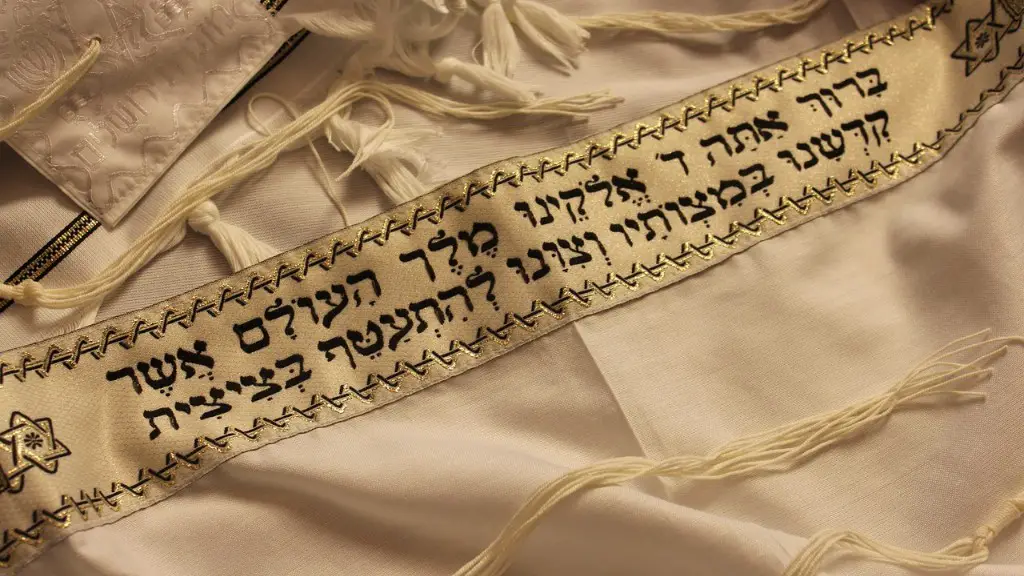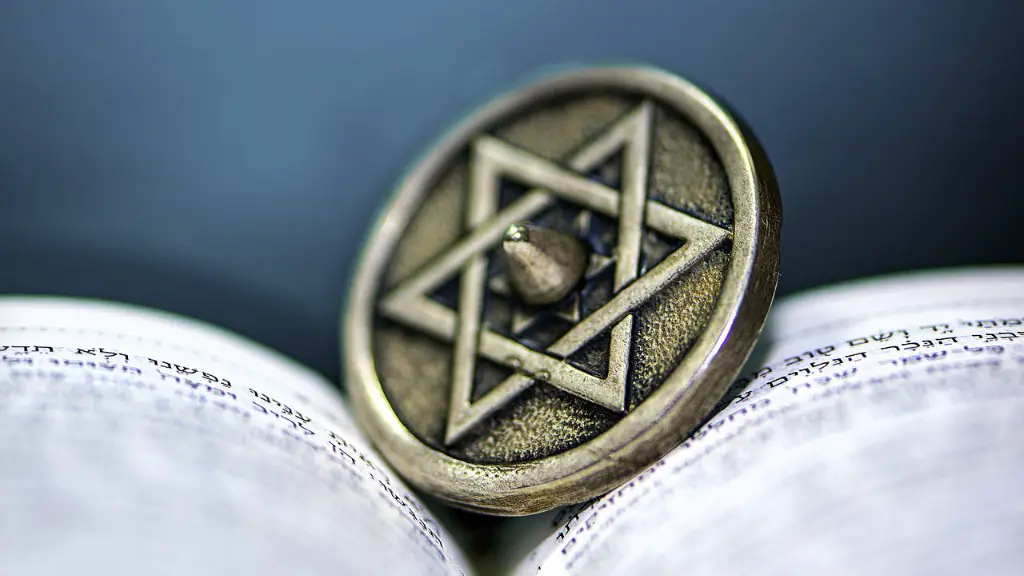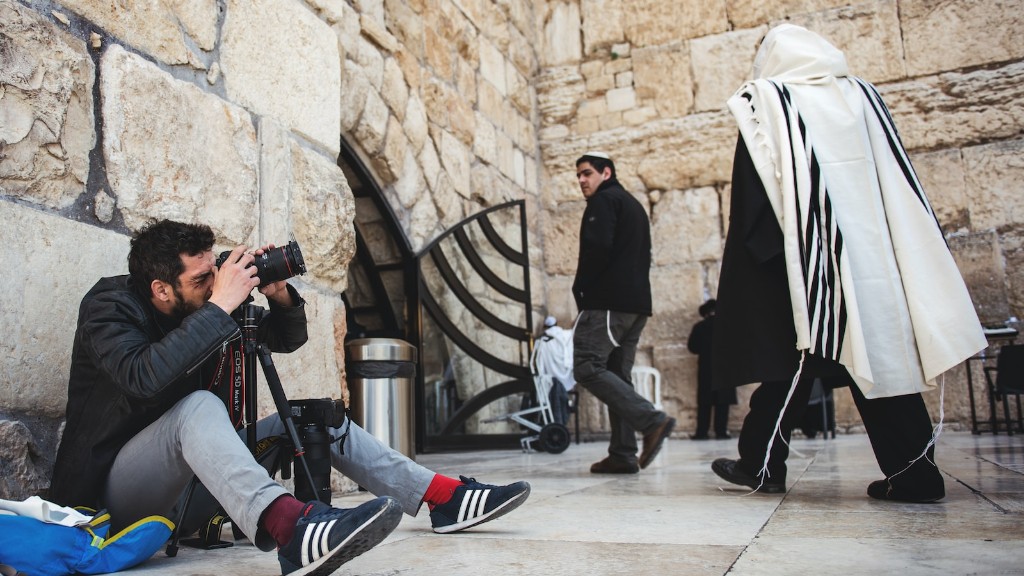Orthodox Judaism is a religious movement that follows a strict interpretation of the Jewish faith, emphasizing traditional practice and belief systems. Over time, Orthodox Judaism has developed into a large and diverse religious community, with many different sects and interpretations. But just where did Orthodox Judaism originate from?
Origins of Orthodox Judaism can be traced back to the Babylonian exile of the Jews in 586 BC. During this period, the Jews were forcibly removed from their homeland, which led to their adoption of many aspects of the Babylonian culture. This includes religious traditions and systems of worship that were adopted from the Babylonian religion. This period also saw the emergence of a number of unique Jewish practices like observing the Sabbath day, various dietary laws and the study of the Torah.
The Talmudic period (200–500 CE) is credited with the growth of Orthodox Judaism. During this period, rabbis began to write extensive commentary and laws based on the written Torah. This commentary, known as the Oral Torah, provided believers with the framework for their everyday lives and beliefs. This ultimately led to the emergence of Orthodox Judaism, with its observance of the Oral Torah being a key tenant of the faith.
The growth of Enlightenment and modernity, beginning in the 16th century, triggered a reinterpretation of the Torah and its commandments. Many rabbis began to challenge traditional interpretations and laws, which led to more progressive forms of Judaism, such as Reform and Conservative. While there has been a growing acceptance of these forms of Judaism, the majority of Jews remained committed to traditional interpretations and observances. This, in turn, led to the further development and diversification of Orthodox Judaism.
Today, Orthodox Judaism is composed of various forms and sects, each with its own unique interpretation and observances. Developments such as the Hasidic movement in the 18th century, which emphasized mysticism and spirituality, helped to further diversify the movement. There is also the Modern Orthodox movement, which seeks to incorporate elements of modernity while still adhering to traditional Jewish beliefs and practices.
Overall, Orthodox Judaism is a profoundly diverse and complex religious movement. It has been shaped by a long and varied history, ranging from the Babylonian exile of the Jews to the influence of contemporary movements such as the Hasidic movement. Although it is often seen as a more conservative version of Judaism, its increasing diversity and complexity has helped to shape a more tolerant and progressive form of the faith.
Influence Of Rabbinic writings
The Talmud, which consists of the Mishnah and Gemara, are some of the most important Rabbinic writings and contain the foundations of Jewish law and tradition. These writings were written between 200 and 500 CE and were later codified by various rabbinical scholars. These works provide a comprehensive guide for religious life and are indispensable for understanding many aspects of Orthodox Judaism. The Mishnah and Gemara are a source of authority for many Orthodox Jews and serve as a basis for the interpretation and practice of Jewish law.
The Talmud also contains much of the philosophy of Orthodox Judaism. It emphasizes the importance of prayer and study as essential components of religious life and offers insights on living a moral and ethical life. Many of the values found in the Talmud, such as peace, justice, mercy and the love of God, are still the basis of Orthodox Jewish belief and practice.
Today, the works of the Talmud, as well as other Jewish writings, are studied extensively by Orthodox Jews. These works have served as the basis for a variety of reform movements within Orthodox Judaism and are essential for understanding the beliefs, practices, and customs of the movement.
Influence Of Israeli Statehood
The establishment of the State of Israel in 1948 had a significant impact on the growth of Orthodox Judaism. Before the establishment of the State of Israel, the religious and cultural landscape of the Jewish people had been greatly influenced by the diaspora, particularly the eastern European Jewish communities. When the State of Israel was founded, many of the Jewish people who had been displaced and persecuted in the diaspora began to return to the Holy Land. This influx of religious Jews helped to solidify and expand the presence of Orthodox Judaism in the region.
The Israeli government also created programs and initiatives to support and expand the practice of Orthodox Judaism. This included the creation of religious educational institutions, the creation of religious kibbutzim (agricultural settlements), as well as the development of religious services and legal systems. This provided a safe and supportive environment for the development and expansion of Orthodox Judaism.
The establishment of the State of Israel also shifted the focus of Orthodox Judaism from the diaspora to the Holy Land. This shift was further strengthened when the major Yeshivas (religious seminaries) were moved to Israel, where most are still located today. Due to the increased presence and influence of Orthodox Judaism in Israel, and the increased support from the Israeli government, the movement has flourished and become a major force in Israeli society.
Modern Orthodoxy
The Modern Orthodox movement is a branch of Orthodox Judaism that seeks to incorporate elements of modernity while maintaining traditional beliefs and practices. It was formed in response to the increasing influence of secularism and philosophical developments in the 19th century, with the aim of combining modernity and tradition. Modern Orthodox Jews strive to be involved in contemporary society while still adhering to a strict interpretation of Jewish law.
In terms of practice, Modern Orthodox Jews strive to observe all of the commandments found in the Torah as well as additional interpretations of the law by various rabbinical scholars. Additionally, Modern Orthodox Jews also seek to engage with modern philosophical thought, as well as various aspects of secular culture. This includes the study of subjects such as science, history, and social studies, and in some cases the study of academic subjects outside of the realm of Jewish tradition.
In terms of beliefs, Modern Orthodox Jews embrace the traditional tenets of Orthodox Judaism. This includes a belief in God, the authority of the Torah, and the belief in the eventual redemption of the Jewish people. Additionally, it also maintains the belief that there are six-hundred-thirteen commandments that are binding on all Jews and should be strictly observed. Despite this, Modern Orthodox Jews often place an emphasis on personal interpretation and understanding of the law rather than the exact letter of the law.
Approaches To Theology
Theology is an integral part of Orthodox Judaism and has been the subject of much debate in the movement. Orthodox Jews believe in a literal interpretation of the Torah, with a focus on God as a sovereign, omnipotent and omniscient being. This includes a belief in the supernatural elements of Jewish teachings, such as the revelation of the Torah at Sinai, the binding of Isaac, and the various prophecies and miracles mentioned in the Bible. This approach to theology has been the main source of debate and discussion within Orthodox Judaism, especially in relation to various forms of Reform and Conservative Judaism.
Another major aspect of Orthodox theology is the concept of mitzvot (commandments). Orthodox Jews believe that there are 613 commandments that are binding on all Jews and should be strictly observed. These commandments are derived from the Torah and form the cornerstone of Orthodox Jewish practice. Some Orthodox Jews have attempted to interpret and apply these commandments to more modern contexts, while still adhering to the traditional interpretation of the law.
The approach to theology taken by Orthodox Judaism has often been seen as more traditional and conservative than other forms of Judaism. This is due to its emphasis on the literal interpretation of the Torah and the strict adherence to traditional commandments and laws. Despite this, there have been various approaches to theology within the movement, ranging from more conservative interpretations to more progressive ones.
Observances And Practices
Orthodox Jews observe numerous religious precepts as mandated by the Torah. This includes weekly observances such as the Shabbat, or Sabbath, as well as regular prayers, dietary restrictions, and rituals. Additionally, there are a number of unique observances and practices specific to the various branches of Orthodox Judaism. For example, some sects of Hasidic Judaism practice rituals and customs that are distinct from other forms of Orthodox Judaism. Similarly, the Modern Orthodox movement often has its own unique observances and practices that differ from traditional Orthodox Judaism.
Observances and practices often vary depending on the geographical region and the individual. This can range from the frequency with which certain prayers and rituals are performed, to the level of adherence to traditional dietary laws and other forms of religious practice. This flexibility in observance and practice is often seen as a major strength of Orthodox Judaism, as it allows individuals and communities to adopt a form of the faith that is comfortable for them.
Ultimately, Orthodox Judaism is a diverse and complex movement. It has a long and varied history and has been shaped by a number of different developments. Despite its diversity, Orthodox Judaism is unified by a shared set of core beliefs and observances that have been handed down over generations and continue to be practiced today.




